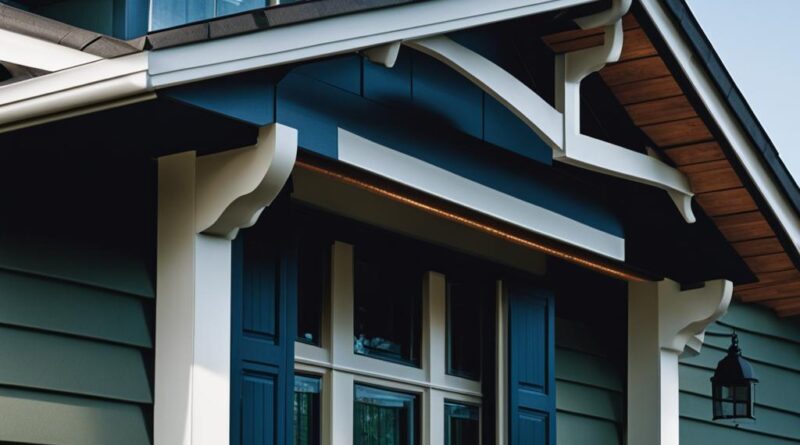Understanding House Eave Functions & Styles
House eaves are not only a fundamental part of a home’s construction but can also significantly enhance its architectural style and functionality. Eaves serve both practical and aesthetic purposes, protecting the exterior walls and foundation of the house from water damage while adding visual impact and character to the overall design.
The design and construction of eaves can vary, allowing homeowners to choose from a range of styles that complement their individual preferences and the overall architectural theme of their homes. From closed eaves to exposed rafter eaves, different options provide unique visual appeal and contribute to the overall ambiance of the house.
Eaves also offer practical benefits such as shading interior spaces from direct sunlight, providing a location for security cameras and lights, and facilitating proper ventilation. They can be finished using various materials, including wood, metal, and vinyl, each offering different maintenance requirements and functional characteristics.
Regular eave maintenance and repairs are crucial to ensure their optimal function and longevity. Cleaning and removing debris, checking for damage, and addressing repairs promptly are key tasks to consider. Additionally, installing gutter guards can help prevent clogs and minimize the need for frequent maintenance.
Key Takeaways:
- House eaves serve both practical and aesthetic purposes, protecting the exterior walls and foundation of the house from water damage while adding visual impact and character to the overall design.
- Eaves come in various styles, allowing homeowners to choose options that complement their individual preferences and the overall architectural theme of their homes.
- Eaves provide practical benefits such as shading interior spaces, accommodating security features, and facilitating proper ventilation.
- Regular eave maintenance, including cleaning, debris removal, and prompt repairs, is essential for optimal function and longevity.
- Installing gutter guards can help prevent clogs and minimize the need for frequent maintenance.
Note: Image is for illustrative purposes only and may not represent the exact eave styles discussed in this article.
What Are Eaves on a House?
Eaves are a crucial architectural feature found on the edges of the roof that extend beyond the walls of a house. They serve multiple purposes, ranging from functional to aesthetic, making them an essential component of any home.
One of the primary functions of eaves is to protect the walls and foundation from rainwater. The overhang created by the eaves directs water away from the exterior walls, preventing moisture damage and potential leaks. This helps maintain the structural integrity of the house and prolong its lifespan.
Eaves also have a significant impact on the design and visual appeal of a home. They can add a sense of style and character to the overall architecture. Whether they are simple and minimalist or intricately designed, eaves contribute to the curb appeal and create a distinct look for the house.
Eaves can be finished in various ways to further enhance their appearance and functionality. They can be adorned with decorative brackets or corbels, adding an elegant touch to the design. Additionally, eaves can be enclosed with a soffit, creating a clean and finished look, or left exposed for a more rustic and open aesthetic.
In addition to their protective and decorative functions, eaves offer practical benefits. They create shade, helping to keep the interior spaces cooler during hot summer months. This can contribute to energy efficiency by reducing the need for excessive air conditioning. Moreover, eaves can accommodate security features such as cameras and lights, enhancing the safety and security of the house.
Overall, eaves play a vital role in the design, functionality, and protection of a house. They combine practicality with aesthetics, providing rainwater management, visual interest, and added security. Their versatility in design and finishing options allows homeowners to customize their eaves to suit their personal style and preferences.
Different Types of Roof Eaves
In home construction, there are several types of roof eaves that serve both functional and aesthetic purposes. Each type offers its own unique characteristics and can be chosen based on factors such as climate, home design, and personal preferences. Let’s explore some common types of roof eaves:
1. Boxed Eaves
Boxed eaves are a popular choice for many homeowners. They are enclosed with a soffit and fascia, creating a clean and finished look. The soffit serves as a protective barrier while adding architectural interest to the eaves.
2. Open Eaves
Open eaves have an exposed underside, allowing for a more natural and rustic appearance. They provide a sense of openness and can enhance the overall aesthetic of the home. Open eaves are often seen in contemporary and modern architectural styles.
3. Soffit Eaves
Soffit eaves feature a horizontal board covering the underside. This type of eave creates a smooth and continuous transition between the walls and roof. Soffit eaves can be customized with different materials and finishes to complement the overall design of the home.
4. Fly Eaves
Fly eaves extend from the gable end of the roof, adding visual interest and dimension to the overall roofline. They create a unique architectural feature and can be customized to suit different home styles.
5. Curved Eaves
Curved eaves make a bold statement and create a visually striking profile. They bring a sense of elegance and uniqueness to the architecture of a home. Curved eaves require specialized design and construction techniques to achieve their desired shape.
Choosing the right type of eave for your home involves considering factors such as climate, architectural style, and personal taste. Each type offers its own benefits and can contribute to the overall beauty and functionality of your home’s design.
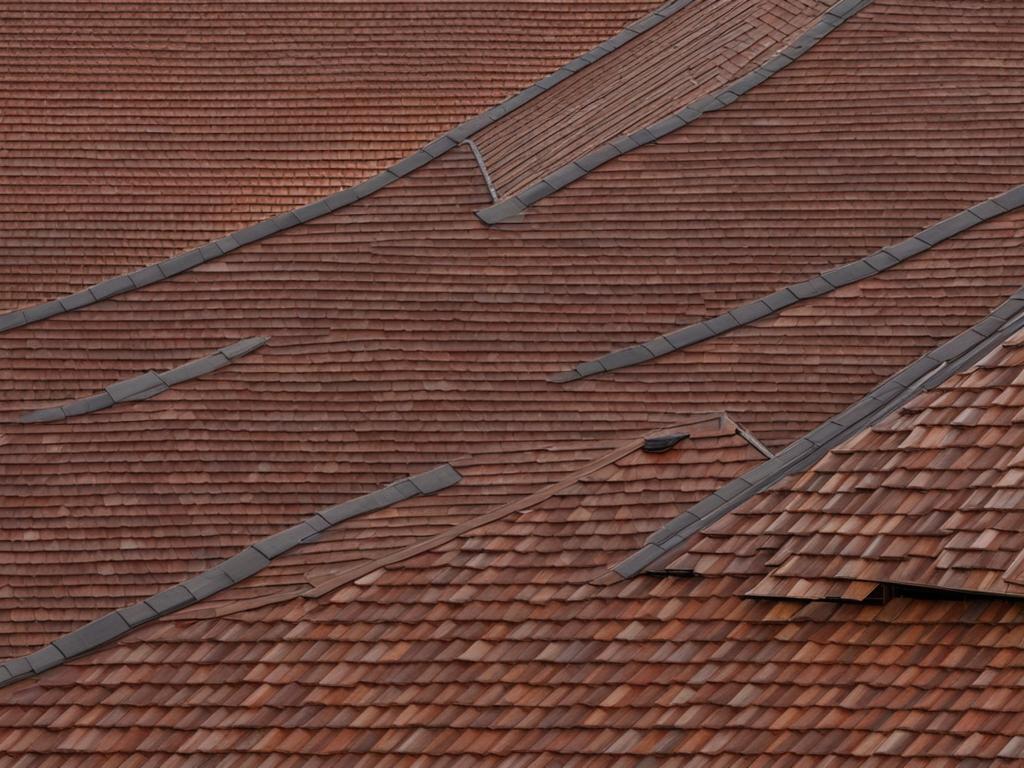
Eaves vs. Soffit: What’s the Difference?
While eaves and soffit are often used interchangeably, it is important to understand that they are not the same thing. Eaves refer to the part of the roof that overhangs the walls, providing additional protection from the elements. On the other hand, soffit is the finish material that covers the underside of the eave, adding a polished and aesthetically pleasing look.
Soffits can come in two main types: vented or solid. Vented soffits have small perforations or openings that allow for proper airflow, helping to ventilate the attic space and prevent moisture buildup. Solid soffits, as the name suggests, do not have openings and provide a smooth and clean appearance.
The primary function of the eave is to shield the building’s walls and foundation from rainwater and direct it away from the structure. The soffit, on the other hand, plays an essential role in covering the underside of the eave, protecting the attic and the underside of the roof from potential damage caused by weather conditions.
Eaves and soffit work together as a cohesive unit to safeguard the building and contribute to the overall architectural design.
Understanding the distinction between eaves and soffit is crucial when discussing roof construction and design. By properly utilizing and maintaining both components, homeowners can ensure the longevity and functionality of their roofs while enhancing the visual appeal of their homes.
The Functions of Roof Eaves
Roof eaves serve multiple functions in a home, providing both practical and aesthetic benefits. Let’s explore the key functions of roof eaves:
1. Temperature Regulation
Eaves play a crucial role in regulating the temperature inside the house. By extending the roofline and casting a shadow over the windows and walls, they block the direct rays of the sun, preventing excessive heat from entering the interior. This natural shade helps keep the house cool during hot summer months, reducing the need for excessive air conditioning and saving energy.
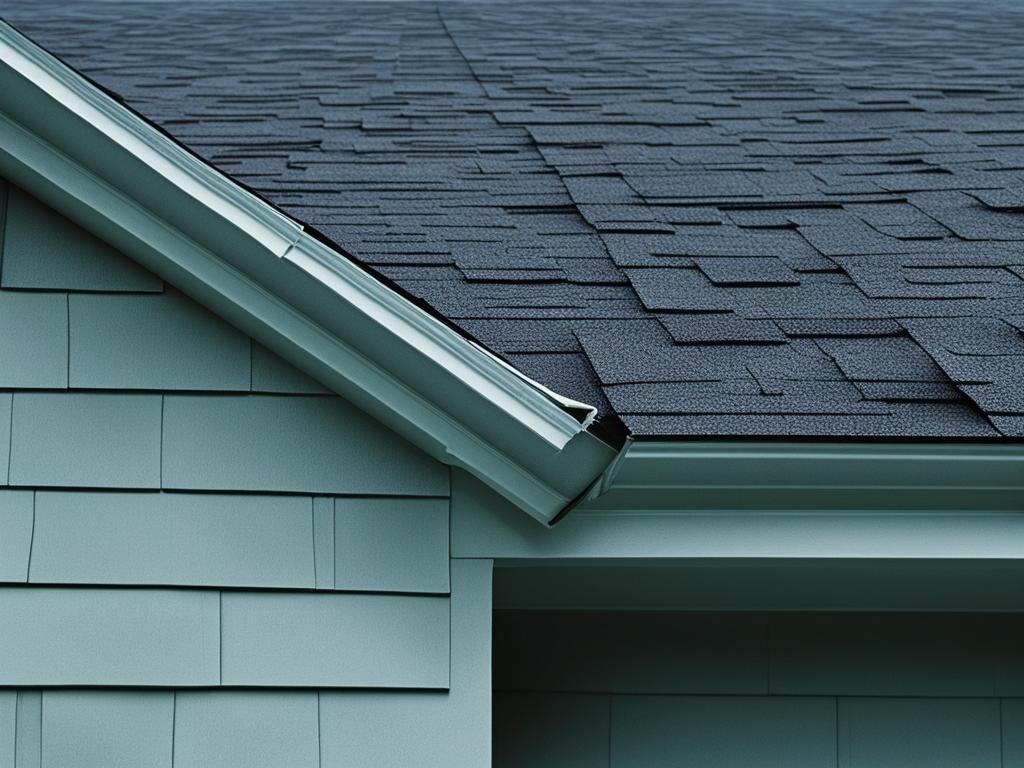
2. Shade and Ventilation
Eaves provide shade not only for the interior spaces but also for outdoor areas like patios and decks. This creates comfortable outdoor living spaces, allowing homeowners to enjoy their time outside without being exposed to direct sunlight. Additionally, eaves with soffits enhance ventilation by facilitating the entry and exit of air through the roof space. This helps regulate the temperature inside the attic and prevents moisture buildup, ensuring a healthier living environment.
3. Moisture and Leakage Protection
One of the primary functions of roof eaves is to protect the walls and foundation from water damage. By extending beyond the walls, eaves prevent rainwater from directly hitting the exterior surfaces, reducing the risk of moisture infiltration and leakage. Properly designed and maintained eaves play a crucial role in preventing leaks, mold growth, and structural deterioration.
4. Design and Aesthetic Appeal
Beyond their functional benefits, roof eaves also contribute to the overall design and aesthetic appeal of a home. Eaves can be designed in various styles to match the architectural theme, adding character and visual interest. Whether it’s the classic elegance of a Victorian home or the sleek lines of a contemporary design, eaves can enhance the curb appeal and elevate the architectural beauty of a house.
| Functions of Roof Eaves | Description |
|---|---|
| Temperature Regulation | Blocks direct sunlight, keeping the house cool in summer. |
| Shade and Ventilation | Provides shade for outdoor areas and enhances airflow in the attic. |
| Moisture and Leakage Protection | Prevents water damage and leakage, protecting the walls and foundation. |
| Design and Aesthetic Appeal | Enhances the overall design and adds visual interest to the home. |
Factors to Consider When Choosing House Eaves
When selecting the ideal house eaves, it’s crucial to take into account several key factors that will contribute to their functionality and aesthetics. By carefully considering climate and weather conditions, home design, and material options, homeowners can make an informed decision that enhances both the visual appeal and the practicality of their eaves.
Climate and Weather:
The local climate and weather conditions play a significant role in determining the most suitable eaves for a home. Areas with heavy rainfall necessitate eaves with larger overhangs to provide optimal protection against water damage. By understanding the specific climate considerations, homeowners can select eaves that effectively shield the walls and foundation from rainwater.
Home Design:
The overall design and aesthetic of the home should harmonize with the chosen eaves. Whether it’s a modern, traditional, or eclectic style, the eave design should complement the architectural features of the house. The size, shape, and proportion of the eaves must align with the overall visual concept, enhancing the curb appeal and adding an exquisite touch to the home’s exterior.
Material Selection:
The choice of material for the eaves is critical for both durability and maintenance considerations. Different materials such as wood, metal, or vinyl each offer unique benefits based on the homeowner’s preferences and the local climate. Wood provides a classic and natural look but requires regular maintenance, while metal offers durability and low maintenance. Vinyl, on the other hand, provides a cost-effective and weather-resistant option.
Consulting with a reputable home builder or architect can provide valuable guidance throughout the decision-making process. Their expertise can ensure that the chosen eaves align with the specific climate conditions, architectural style, and desired maintenance level.
The Importance of Drip Edge on Eaves
A drip edge plays a crucial role in protecting eaves from water-related issues and preventing roof and structure damage. By effectively redirecting water runoff away from the fascia board and eaves into the gutters, a drip edge safeguards the roof, the structural integrity of the house, and the foundation. It acts as a barrier, preventing water from seeping underneath the roofing material and causing potential leakage or moisture buildup in the eaves.
The Function of a Drip Edge
A drip edge acts as a first line of defense against water penetration, ensuring that rainwater is directed away from vulnerable areas. It creates a seamless pathway for water runoff, safeguarding the eaves and preventing water from accumulating and causing structural damage. By preventing water from seeping into the eaves, a drip edge minimizes the risk of rot, mold, and other moisture-related issues.
Proper Installation for Effective Protection
Proper installation of a drip edge is paramount to ensure its effectiveness in protecting the eaves. When installed correctly, a drip edge prevents water from flowing back under the roof, keeping it away from the eaves and minimizing the chances of water-related damage. It is essential to consult a professional roofer or contractor to ensure proper installation of the drip edge, as any gaps or errors in installation can compromise its functionality.
Enhancing Long-Term Eave Protection
In addition to a drip edge, regular maintenance of the eaves is crucial to preserve their functionality and prevent potential issues. Regular inspections and cleaning can help identify any damage or signs of wear and tear, allowing for prompt repairs and maintenance. Keeping the gutters free from debris such as leaves and twigs also ensures that the water runoff is properly diverted away from the eaves, maximizing their longevity and protection.
| Drip Edge Benefits for Eaves | Protecting the eaves from water infiltration |
|---|---|
| Preventing roof and structural damage | Minimizing the risk of rot, mold, and moisture-related issues |
| Directing water runoff away from the fascia board | Preserving the integrity of the eaves and preventing water buildup |
| Safeguarding the foundation from water damage | Minimizing the potential for leaks and structural instability |
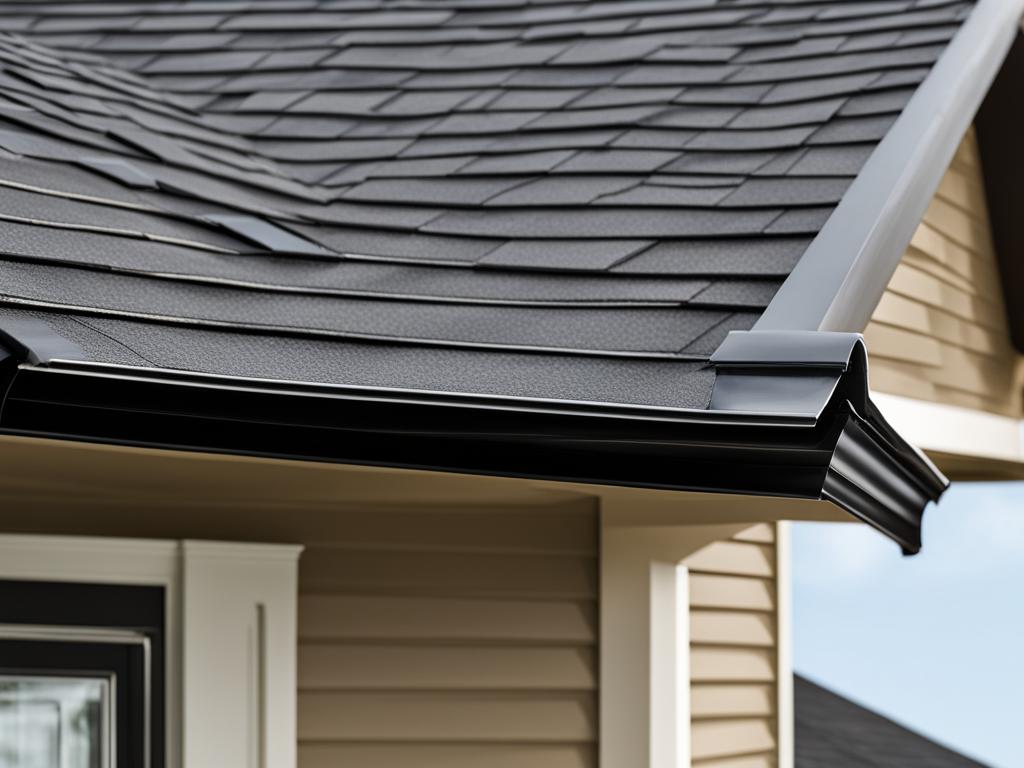
Cleaning and Maintenance of Eaves
Regular eave cleaning and eave maintenance are essential for ensuring optimal performance and longevity. By keeping your eaves in good condition, you can prevent potential damage and maintain the structural integrity of your home.
Here are some important steps to consider for eave cleaning and maintenance:
- Inspect for Damage: Regularly check your eaves for any signs of damage, such as cracks, leaks, or signs of rot. Address any issues promptly to prevent further deterioration.
- Remove Debris: Clear away debris, such as leaves, twigs, and dirt, that may accumulate on your eaves. This will ensure proper water flow and prevent clogging.
- Wash the Eaves: Periodically wash the eaves to remove dirt, pollen, and other buildup. This can be done using a gentle detergent and a soft brush or sponge.
- Check for Leaks: While cleaning the eaves, carefully inspect for any signs of leaks or water damage. Address any leaks promptly to prevent further issues.
- Install Gutter Guards: Consider installing gutter guards to prevent debris from accumulating in the gutters and eaves. Gutter guards help minimize maintenance requirements and ensure proper water drainage.
Regular cleaning and maintenance of your eaves will not only enhance their performance but also contribute to the overall aesthetics and functionality of your home.
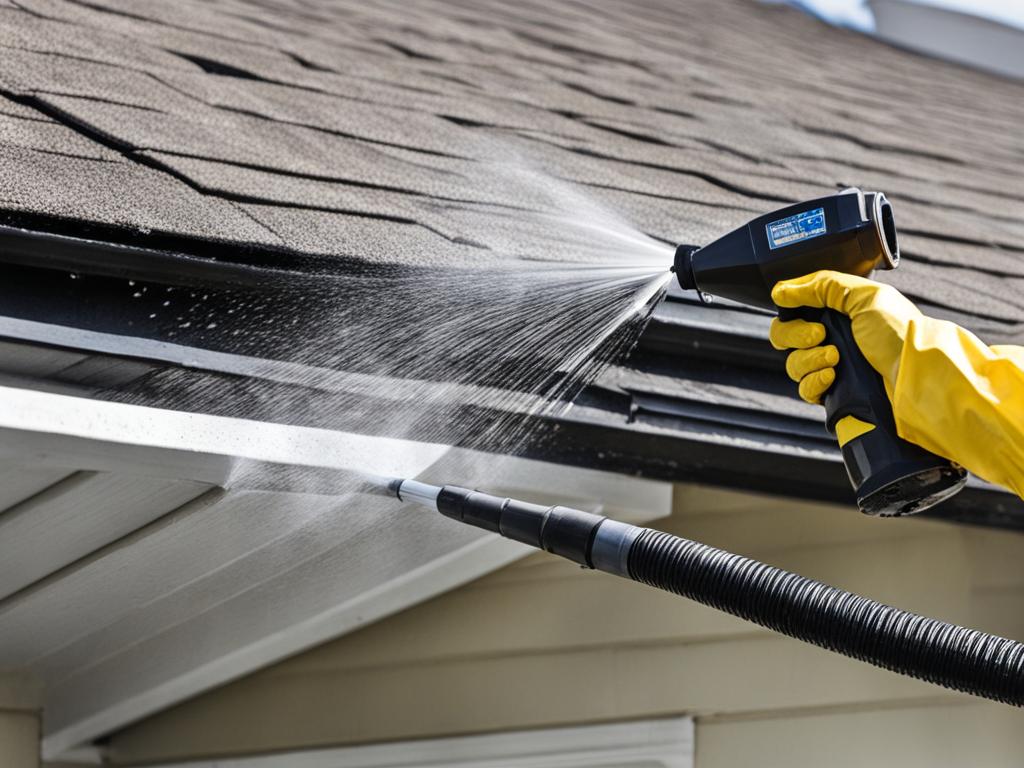
The Role of Eaves in Sustainability
Eaves play a crucial role in promoting sustainability and creating a more eco-friendly living environment. By incorporating sustainable initiatives and leveraging the natural benefits of eaves, homeowners can enhance energy efficiency and reduce their environmental impact. Let’s explore how eaves contribute to sustainability through temperature regulation, moisture protection, and other sustainable initiatives.
Temperature Regulation
Eaves act as a natural barrier against excessive heat from the sun, providing shade and helping to regulate the temperature inside the house. By blocking the direct rays of the sun, eaves reduce the need for air conditioning and help homeowners maintain a comfortable indoor environment. This not only promotes energy efficiency but also reduces carbon emissions and lowers utility bills.
Moisture Protection
One of the key functions of eaves is to prevent water damage to the walls and foundation of a house. By extending beyond the walls, eaves divert rainfall away from the building, protecting it from moisture infiltration and potential leaks. This moisture protection contributes to the durability and longevity of the structure, reducing the need for repairs and the associated environmental impact.
Sustainable Initiatives
Eaves can be integrated with other sustainable initiatives to further enhance energy efficiency and environmental sustainability. Homeowners can consider optimizing the orientation of their homes to maximize the benefits of eaves in different climates. Additionally, incorporating double glazing and solar panel systems can work in synergy with eaves, creating a holistic approach to sustainability and reducing reliance on non-renewable energy sources.
By combining these sustainable initiatives and leveraging the functional benefits of eaves, homeowners can create a more sustainable, energy-efficient, and comfortable living space while minimizing their carbon footprint.
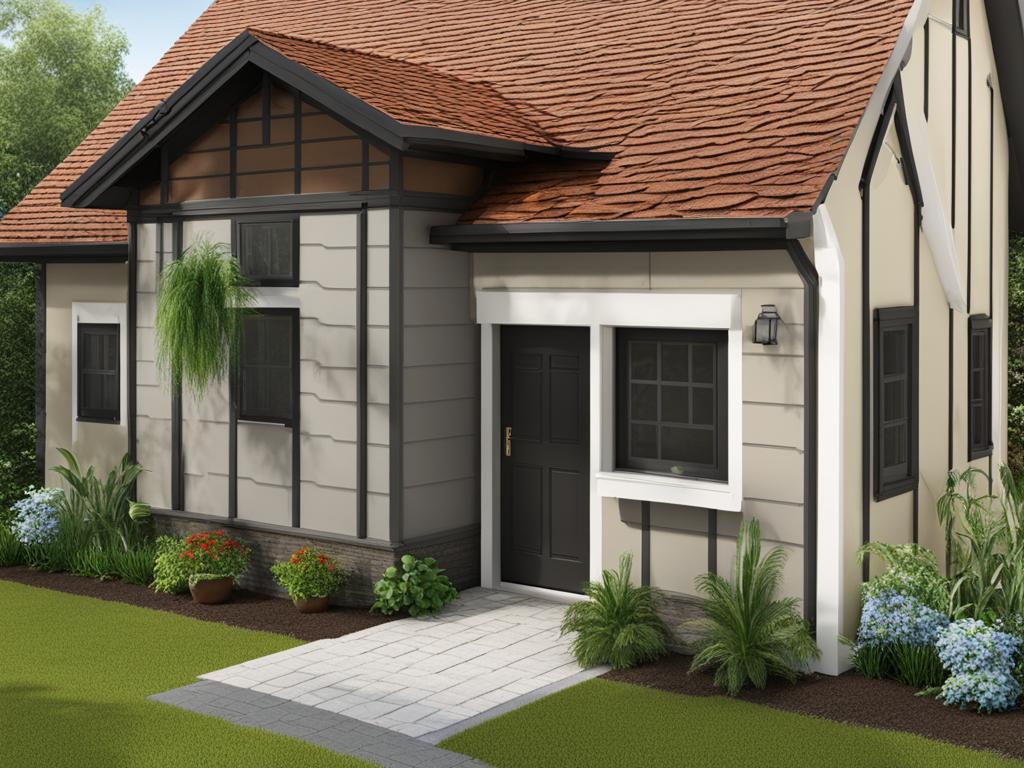
| Benefits of Eaves in Sustainability | Examples |
|---|---|
| Temperature regulation | Reduces reliance on artificial cooling systems in hot climates |
| Moisture protection | Prevents water damage and reduces the need for repairs |
| Sustainable initiatives | Combined with solar panels and double glazing for enhanced energy efficiency |
The History and Cultural Significance of Eaves
Eaves have a rich history in architecture and have been used in various architectural styles throughout time. They were initially developed as a functional element to protect buildings from water damage, particularly in ancient Greek architecture. Over time, eaves became associated with grandeur and aesthetics, and their styles evolved accordingly.
Different architectural styles, such as Craftsman Bungalows, Midcentury Modern homes, Victorian homes, Contemporary homes, and Dutch Colonials, have distinct eave styles that define their look and cultural significance.
Eaves in Craftsman Bungalows often feature exposed rafters and decorative brackets, reflecting the emphasis on craftsmanship and natural materials. Midcentury Modern homes, on the other hand, often have clean, minimalist eaves with bold geometric shapes and wide overhangs, reflecting the era’s focus on simplicity and functionality.
Victorian homes are known for their ornate, decorative eaves, featuring intricate details such as scalloping, corbels, and decorative molding. The eaves of Contemporary homes often have sleek lines and minimalist designs, complementing the modern aesthetic of clean, straight edges and large windows.
Dutch Colonials typically showcase a distinctive flared eave shape, known as a “Jerkinhead” or “Crowsfoot” eave. This unique eave style adds character and charm to the architectural design.
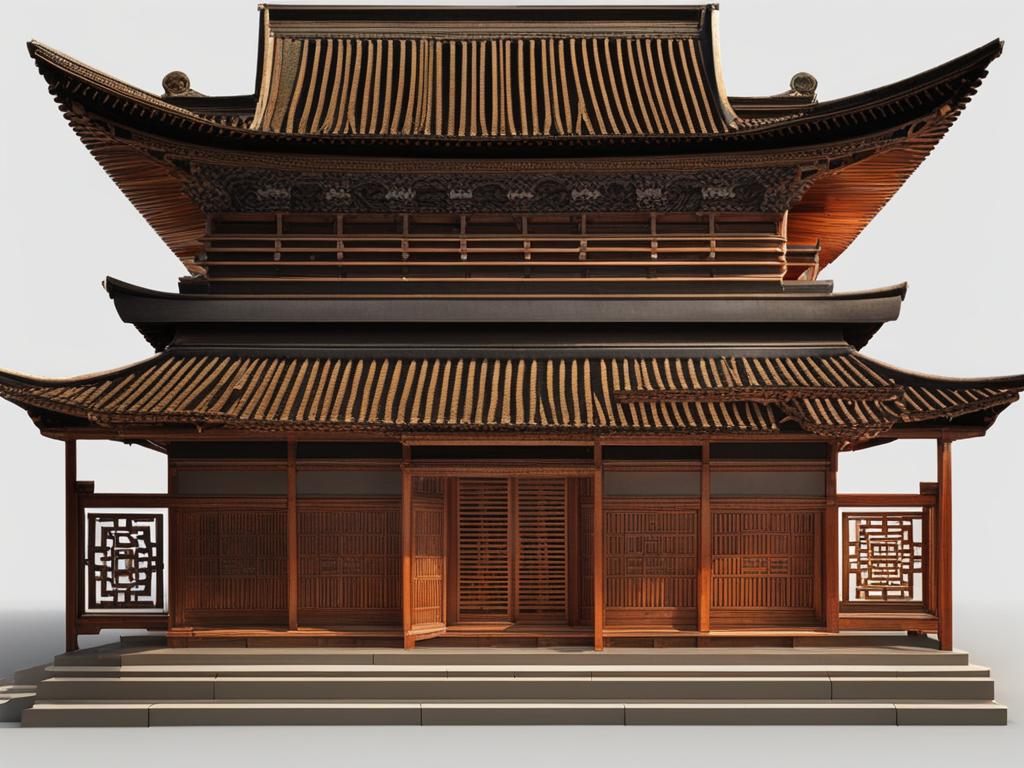
| Architectural Style | Eave Features |
|---|---|
| Craftsman Bungalows | Exposed rafters, decorative brackets |
| Midcentury Modern | Clean lines, minimalist designs, bold geometric shapes, wide overhangs |
| Victorian | Ornate details, scalloping, corbels, decorative molding |
| Contemporary | Sleek lines, minimalist designs, clean straight edges |
| Dutch Colonials | Flared “Jerkinhead” or “Crowsfoot” eave |
The eave styles of these different architectural styles not only serve functional purposes but also contribute to the cultural significance of the structures. They define the character and identity of the homes, connecting them to historical and artistic movements.
Pros and Cons of Eaves
Eaves offer several advantages that contribute to the functionality and appeal of a home. However, they also have some disadvantages that homeowners should consider. Let’s explore the pros and cons of eaves.
Advantages of Eaves
- Shade: Eaves provide shade for both the interior and exterior spaces of a house. They help block the sun’s rays, keeping rooms cooler and reducing the need for excessive air conditioning.
- Water Diversion: The overhang of eaves directs rainwater away from the walls, windows, and foundation of a house. This helps prevent water damage, including leaks and moisture-related issues.
- Security Features: Eaves offer a convenient location to install security cameras and lights. By having eaves, homeowners can strategically place these features for effective surveillance and enhanced safety.
- Soffit Accommodation: Eaves can accommodate soffits, which are horizontal boards that cover the underside of the eaves. Soffits not only add to the visual appeal but also provide practical benefits such as ventilation and airflow regulation.
Disadvantages of Eaves
- Pest Attraction: The shaded and protected areas underneath eaves can attract pests like birds and insects. Proper maintenance, including cleaning and sealing potential entry points, can help mitigate this issue.
- Expenses for Finishing Materials: Eaves often require finishing materials such as fascia and soffits, which can add to the overall cost of construction or renovation projects. However, these materials contribute to the durability and aesthetic appeal of the eaves.
- Vulnerability to Wind Damage: Eaves can potentially create uplift forces during strong winds, making the roof more susceptible to damage. Proper design and installation, including reinforcement and anchoring, can help minimize this risk.
Proper maintenance and addressing the challenges associated with eaves can help maximize their benefits and mitigate potential disadvantages.
Overall, eaves offer valuable advantages such as shade, water diversion, and security features. However, homeowners should be aware of the potential for pest attraction, expenses for finishing materials, and vulnerability to wind damage. With proper care and consideration, eaves can enhance the functionality, aesthetics, and protection of a home.
Conclusion
In conclusion, house eaves play a crucial role in both the functionality and aesthetics of a home. They serve as a protective barrier, safeguarding the walls and foundation from water damage. Eaves also regulate the temperature inside the house by providing shade and ventilation, ensuring a comfortable living environment.
Understanding the different types of eaves and considering factors like climate and design can help homeowners make informed decisions when choosing the right eave style for their home. Whether it’s boxed eaves, open eaves, or curved eaves, each style has its own unique characteristics that contribute to the overall architectural appeal.
Regular maintenance of eaves is essential to ensure their optimal performance and longevity. By performing routine inspections and addressing any issues promptly, homeowners can prevent potential damage, such as cracks, leaks, or rot. Additionally, keeping the eaves free from debris and installing gutter guards can minimize maintenance requirements and ensure proper water flow.
Ultimately, taking care of the house eaves is of utmost importance. By maintaining their functionality and appearance, homeowners can protect their investment and enhance the overall beauty and value of their home.
FAQ
What is the function of house eaves?
House eaves serve to protect the exterior walls and foundation from water damage by overhanging the roof. They also provide shade, add visual impact to the architecture, and can house security features.
What are the different types of roof eaves?
Some common types of roof eaves include boxed eaves, open eaves, soffit eaves, fly eaves, and curved eaves. The choice of eave type depends on factors such as climate, home design, and aesthetic preferences.
What is the difference between eaves and soffit?
The eave is the part of the roof that overhangs the walls, while the soffit is the finish material that covers the underside of the eave. Soffits can be vented or solid and provide a finished look to the eave.
What are the functions of roof eaves?
Roof eaves provide shade, regulate temperature, facilitate ventilation, and protect the walls and foundation from water damage. They also contribute to the overall design and aesthetic appeal of the house.
What factors should I consider when choosing house eaves?
Factors to consider when choosing house eaves include climate and weather conditions in your area, home design, and material options. Consulting with a home builder can help you make the best decision.
Why is a drip edge important for eaves?
A drip edge helps prevent water from getting underneath the roofing material and into the eaves. It directs rainwater away from the fascia board and eaves into the gutters, protecting the roof, structure, and foundation.
How do I clean and maintain eaves?
Regular cleaning and maintenance of eaves are necessary to ensure optimal performance and longevity. This includes checking for damage, removing debris, and washing the eaves. Installing gutter guards can help prevent clogs.
What role do eaves play in sustainability?
Eaves contribute to sustainability by regulating temperature, protecting against moisture, and enhancing energy efficiency when combined with other sustainable initiatives. They provide shade, prevent water damage, and regulate airflow.
What is the history and cultural significance of eaves?
Eaves have a rich history in architecture and have been used in various styles throughout time. Different architectural styles have distinct eave styles that define their look and cultural significance.
What are the pros and cons of eaves?
Eaves offer advantages such as providing shade, diverting water away from the house, and accommodating soffits. However, they can attract pests, add expenses for finishing materials, and potentially make the roof more vulnerable to wind damage.

